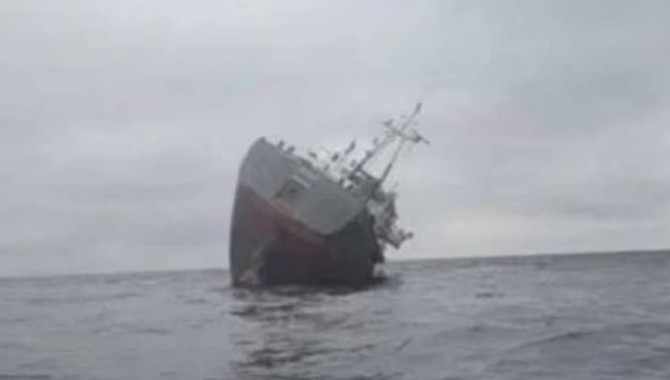The interim report on marine hull trends from the Nordic Marine Insurance Statistics database, which gets its figures from the hull and machinery portfolio insured by Cefor members reflects a 50% fall in major insurance losses.
In 2022, four losses in the US$10-30m range were reported, compared to eight in the first half of 2021, but the report warns, the major claims impact has been low in recent years, except for fires. “In the context of renewed activity of high-value segments such as container and cruise vessels, from a statistical perspective one would expect some increase in the occurrence of major claims.”
After an extraordinary drop in the cost of claims on a per vessel basis in 2020, the claim cost has risen somewhat in the period under review but has at mid-year 2022, not yet exceeded the already low levels of the years prior to 2020.
The positive trend for the frequency of total losses continued in 2022, with a low frequency of 0.04% in the first six months of 2022 a compared to 0.05% in the year 2021.
The long-term trend in claims frequency has showed a substantial reduction from about 30% to a level of around 20%. But again, after the significant drop in 2020 in connection with reduced claims activity in some segments, the claims frequency has started to rise again. “This is in line with expectations due to trade and shipping activity increasing again. There is some consolation in seeing that claims frequency has as of mid-2022, not yet reached pre-Covid levels.
Insured values are curving upwards: vessels renewed in the first six months of 2022 showed an average increase in insured values of 7.7%. This compares to an increase of 4.9% in the whole year 2021. The 2021/2022 increase is largely driven by a high demand for container vessels after the demand for consumer goods bounced back in 2021. For new vessels, the increase in steel prices have probably contributed to an inflation of newbuilding prices and vessel values.
But there are now present influencing factors that suggest the latest trends may go into reverse.
As repair cost is influenced by other currencies than US$, exchange rates may impact the statistics. A strong US dollar will, all else being equal, imply a reduced claim cost measured in US$. Since 2017, European and other currencies strengthened somewhat compared to the US$. This small increase does not seem to have had much impact on the claims cost in the ensuing years and is partly reversed in 2022.
Other factors with influence on hull repairs are the price of steel and spare parts and conditions at repair yards. As steel prices increased strongly since 2021 this can be expected to contribute to some inflation in claims costs going forward.
Whilst the Hong Kong marine hull market is a small fraction of that in the Nordic countries it can be fairly assumed that the interim figures issued by the Insurance Authority showing an underwriting profit of HK$4.66m in the first six months of 2022 compared to a loss of HK$19.64m in the same period in 2021, reflects the same factors along with more disciplined underwriting.
Source:
Hong Kong Maritime Hub
The opinions expressed herein are the author's and not necessarily those of The Xinde Marine News.
Please Contact Us at:
media@xindemarine.com


 Ningbo Containerized Freight Index Weekly Commentar
Ningbo Containerized Freight Index Weekly Commentar  Ningbo Containerized Freight Index Weekly Commentar
Ningbo Containerized Freight Index Weekly Commentar  Ningbo Containerized Freight Index Weekly Commentar
Ningbo Containerized Freight Index Weekly Commentar  BIMCO Shipping Number of the Week: Bulker newbuildi
BIMCO Shipping Number of the Week: Bulker newbuildi  Ningbo Containerized Freight Index Weekly Commentar
Ningbo Containerized Freight Index Weekly Commentar  Ningbo Containerized Freight Index Weekly Commentar
Ningbo Containerized Freight Index Weekly Commentar